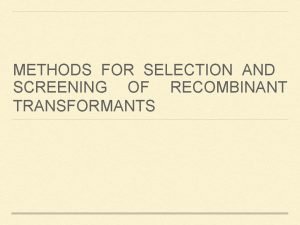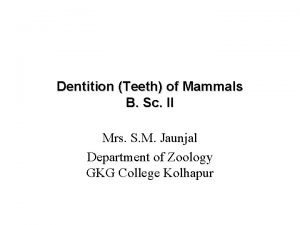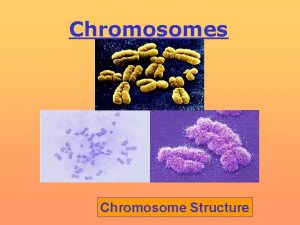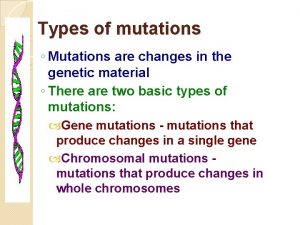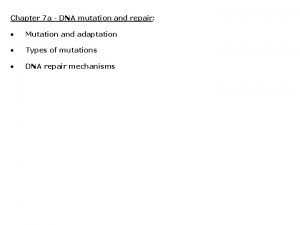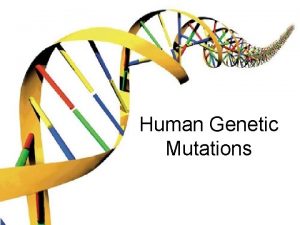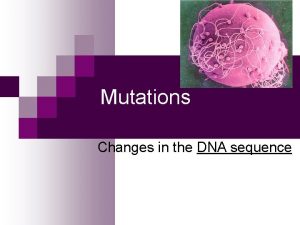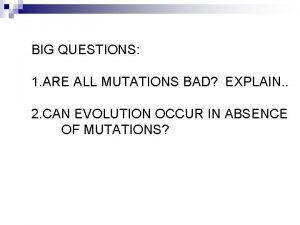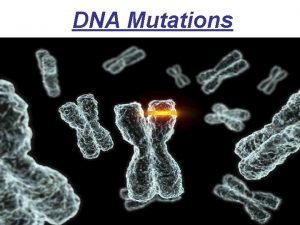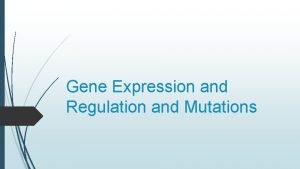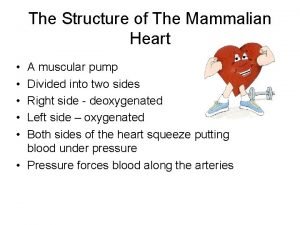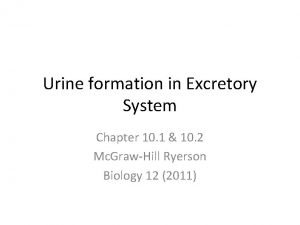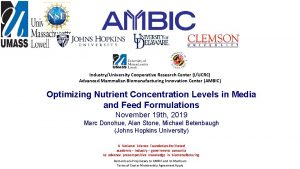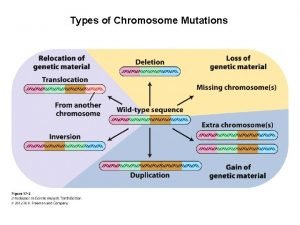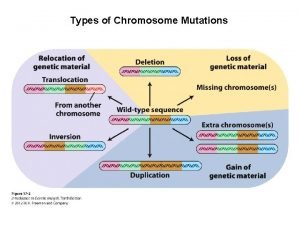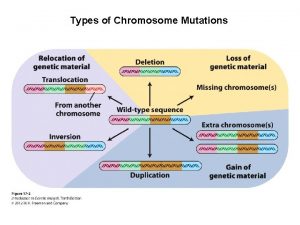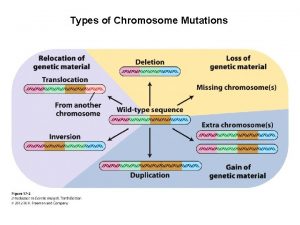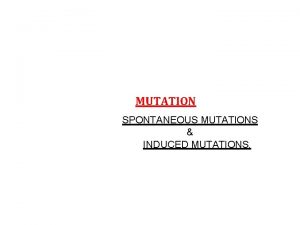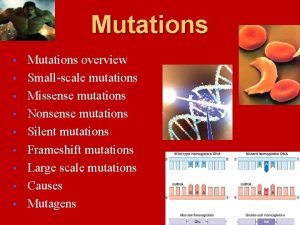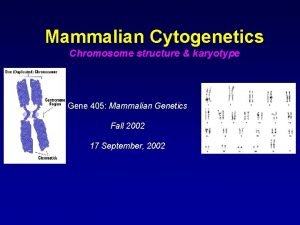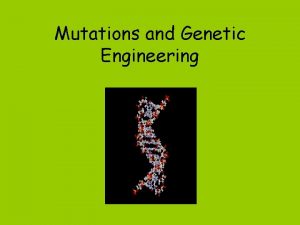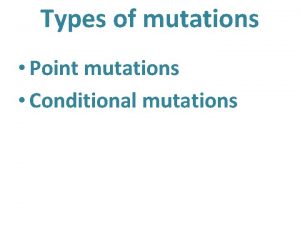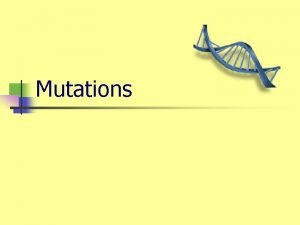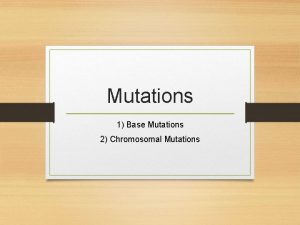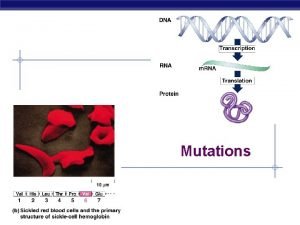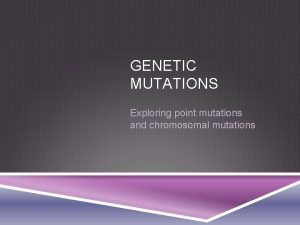Types of Chromosome Mutations Mammalian X Chromosome Inactivation

















- Slides: 17

Types of Chromosome Mutations

Mammalian X Chromosome Inactivation Calico cats are usually females heterozygous for orange allele and black allele at an X-linked locus. Male calico cats are very rare. Why is the case?

X Chromosome Inactivation Most genes on the inactivated X chromosome are silenced (turned off, not expressed). Genes on the inactivated X chromosome remain silenced in descendant cells. Heritable alteration of this type is an example of epigenetic inheritance. Chromosomal DNA sequence remains unchanged.

Mammalian X Chromosome Inactivation Inactivated X chromosome becomes highly condensed, darkly staining structure called Barr body. State of inactivation is transmitted down the cell lineage.

Types of Chromosome Mutations

Chromosome Mutations: Changes in Chromosome Structure Deletion/Deficiency Duplication Inversion A B C D E F A B B C A B C D E F A E D C B F A B C D E F A B C D J K G H E F D E F Translocation I I

Origins of Chromosomal Rearrangements Nonallelic Homologous Recombination (NAHR)

Chromosome Mutations Deletion/Deficiency Duplication Inversion A B C D E F A B B C A B C D E F A E D C B F A B C D E F A B C D J K G H E F D E F Translocation I I

Deletions can be terminal or interstitial. An intragenic deletion inactivates a gene; multigenic deletions affect several genes. Homozygous condition for chromosomal deletion is often lethal. Chromosome deletion cannot revert. a a normal chromosome deletion chromosome Recessive alleles covered by a deletion are unmasked and are expressed phenotypically. This effect is known as pseudodominance. Synapsis of a normal chromosome and a deletion chromosome produces a deletion loop during meiosis. In heterozygous deletions, recombination frequencies between genes outside the deletion are lower than normal.

Deletions Cancer cells often harbor chromosome mutations. Cells of a tumor do not always show the same chromosome mutation. Chromosome-specific deletions are associated with certain tumors.

Chromosome Mutations Deletion/Deficiency Duplication Inversion A B C D E F A B B C A B C D E F A E D C B F A B C D E F A B C D J K G H E F D E F Translocation I I

Duplications Arrangement of a duplication can be in tandem or reverse order. Several pairing possibilities exist in heterozygotes of a normal chromosome and a sideby-side duplication. Heterozygous condition results in a loop structure during meiosis. Duplications (and higher order duplications) can occur by unequal crossing-over after asymmetric synapsis of chromosomes.

Chromosome Mutations Deletion/Deficiency Duplication Inversion A B C D E F A B B C A B C D E F A E D C B F A B C D E F A B C D J K G H E F D E F Translocation I I

Inversions A B C D E F G H A B F E D C G H pericentric inversion A B C D E F G H A B C D E G F H paracentric inversion A heterozygote for a normal chromosome and an inversion will form an inversion loop during meiosis. The number of recombinant products is reduced in inversion heterozygotes by: 1) elimination of crossing over products within the inversion loop, and 2) inhibition of pairing between homologues in the region of the inversion.

Pairing in paracentric inversion heterozygotes and resulting meiotic products. Anaphase bridge results in random breakage of chromosomal material. 2 of 4 meiotic products are not genetically balanced and will not produce viable gametes.

Pairing in pericentric inversion heterozygotes and resulting meiotic products.

Possible effects of inversion at the molecular level No disruption of any gene. Chromosomal rearrangement is the only result. Disruption of one gene by chromosomal breakage. Disruption of two genes and fusion of those two genes.
 Insertional inactivation definition
Insertional inactivation definition Omnivore teeth structure
Omnivore teeth structure How to read chromosome
How to read chromosome Syndrome triple x
Syndrome triple x Types of substitution mutations
Types of substitution mutations 2 main types of mutations
2 main types of mutations Dna types of mutations
Dna types of mutations Dna types of mutations
Dna types of mutations 4 types of mutations
4 types of mutations Types of mutations
Types of mutations Types of mutations
Types of mutations Mammalian dive reflex
Mammalian dive reflex Mammalian heart
Mammalian heart Excretory organ of mammals
Excretory organ of mammals Mammals characteristics
Mammals characteristics Mammalian excretory system
Mammalian excretory system Mammalian excretory system
Mammalian excretory system Mammalian biomanufacturing
Mammalian biomanufacturing
